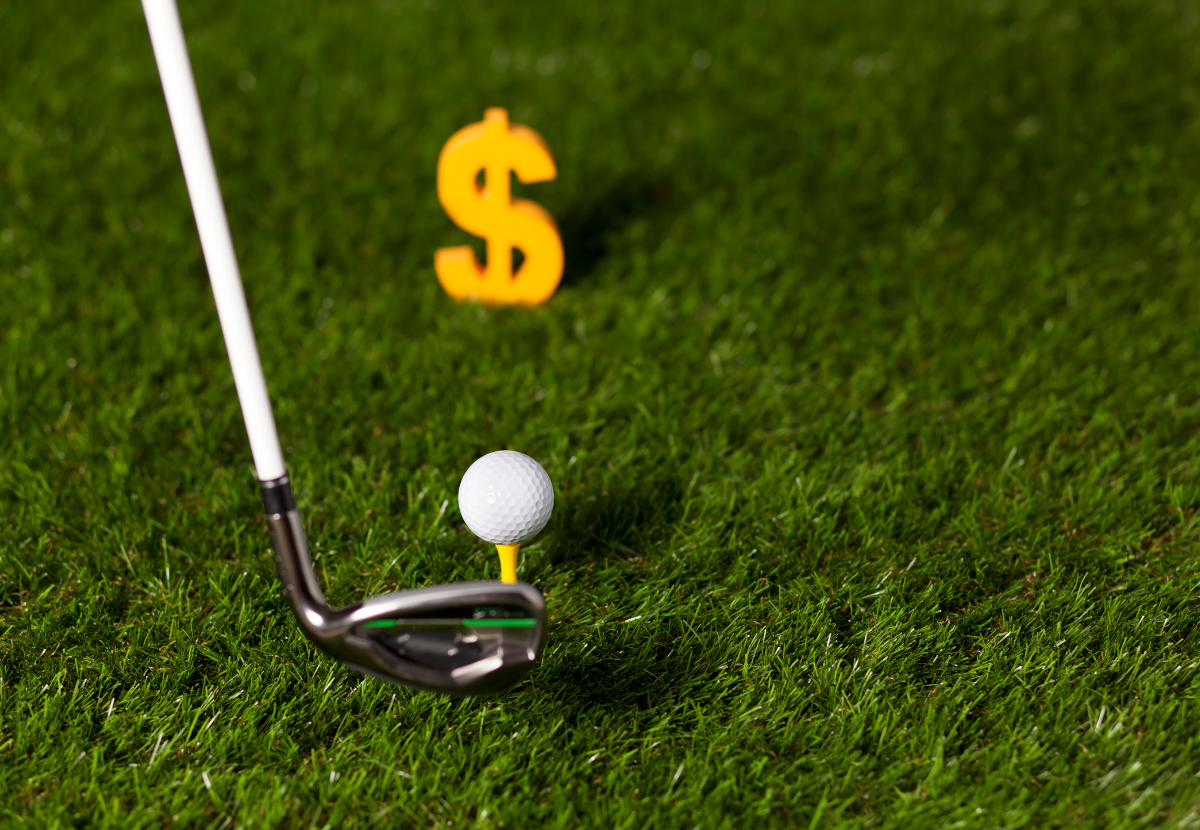The sweet spot: Finding the best scale of membership fee increases
Are you concerned that increasing your golf club's membership fees by too much will cause an uproar? Fear not. With a focus on customer experience and great persuasive skills, you can actually increase fees by almost two digits without causing a massive churn.
Imagine finding yourself in a tricky situation where your current income is no longer enough to cover your expenses. Perhaps your main sponsor pulled out, or the electricity bill has tripled since last year.
In this situation, you may consider raising membership fees to cover the shortfall. But this can be a tough decision because you surely don't want to charge members too much and risk making them angry or losing them.
So, this leads to the million-dollar question: How much can you crank up the fee without stepping on your members' toes?
The average limit is not necessarily your golden limit
Our latest data uncovers the secret to striking the perfect balance when increasing membership fees. And spoiler alert:
On average, a golf club can increase its membership fee by up to 8% without causing more members to either leave or downgrade their memberships, as compared to smaller price increases.
Players 1st
But wait a minute before you bump up the fee. Because we can't guarantee that your club will triumph with an 8% increase. After all, we are only talking about averages.
And not all clubs have the same potential for raising membership fees, as this is influenced by different key factors. One of them is how members feel about a possible fee increase based on characteristics like NPS or age.
So, how can you make this fresh data about the scale of the fee increase work for your club?
Knowing the average point at which members start leaving due to an increase in fees is useful, but it's not the holy grail. The data shows that focusing solely on this limit isn't nearly as crucial as focusing on your effort to reach it.
Players 1st
Prioritize members to achieve the highest possible tipping point
Our data shows that members generally are willing to pay quite a lot extra before they find the increase too much and decide to leave the club. And this information is a keystone if you want to increase the fees as much as possible.
Let's dive into the numbers and see why.

If you increase your membership fee by 4%, it might not seem like a big deal. And in fact, nearly 70% of your members think the same. These members will stay despite the small price change.
In contrast, an 8% increase might sound like a lot. And as the graph shows, more of your members agree. In this situation, fewer members will definitely stay.
But the more aggressive approach doesn't necessarily mean losing more golfers. And this is why.

% of members who might leave when increasing the membership fee by 4% or 8%
When doubling the scale of the increase, we see a 10% difference in people who are in two minds about their decision. So, a slight increase of 4%? Fine. An increase of 8%? Give me a second. The doubt kicks in more heavily at the higher price change.
But eventually, this doubt can be your key to success.
On average, if a club convinces all the members in doubt to stay, it can actually achieve a retention rate of 83% that'll be the same at 8% as it would be at 4%.
Players 1st
But this success is not easy to achieve. First of all, effective communication with your members is essential in this matter. But it's not just about telling them what's happening - you also need to take the time to listen to their feedback and concerns.
And this leads over to the member experience. If your club doesn't offer a great atmosphere, fantastic service, and tasty food, why would members be willing to pay more to be there? By prioritizing both communication and member experience, you can maximize your potential for a fee increase and see the returns you're looking for when going for a high fee hike.
Doing the increase wrong can lead to frightening results
By now, you've learned about your club's potential and whether your members are likely to stay or waver when you raise their membership fees by a certain scale. But let's face it. There's a less exciting aspect to this topic.
Because how many members will downgrade their membership or even leave if they have to pay more for their current memberships?
Some of your members are already considering leaving the club soon, regardless of any increase or none. Those members are a part of the natural churn that most golf clubs experience and a price rise will most likely trigger them to leave.
Players 1st
Also, some members or guests might not find the pricier membership worth it. If those members decide to stay anyway, they will most likely downgrade their membership, for example, from a full-time membership to a flexible membership with restricted playing rights.
Retaining flex members at the club is, of course, better than them quitting, but you still miss out on the potential to maintain them as standard members.

The interesting part is that the number of members who say they'll leave or downgrade their membership remains the same whether you increase the fee by 4% or 8%. But there's still a risk that more members will join them.
In the best-case scenario, a golf club can persuade all the doubting members to keep their existing membership, resulting in the same percentage (17%) of members downgrading or canceling their membership as with a lower increase. But in the worst-case scenario, all of them decide to either leave or go for a cheaper membership, causing this percentage to skyrocket to 43%.
Players 1st
CxM experts can aim for double-digit percentage increases
So, while a high rise of 8% on average may have the same output as a lower increase, it won't benefit you if you can't convince the members in doubt to stay.
But what does actually happen if you are knee-deep in utility bills and feel the urgency to raise the fee intensely?
On average, a 12% increase causes the number of golfers who either claim to leave or downgrade their membership to rise to 25%, which is much higher than when increasing the fee by a smaller amount.
Players 1st
In short, once you cross the 8% threshold, members might feel like the increase is too steep, and they may start looking elsewhere for their golfing needs. But of course, this all depends on your club's work with member experience before the increase and how well you can convince your members to stick around.
Let's say your club is a CxM powerhouse with great relationships with your members. In that case, you might be able to pull off a double-digit increase and actually benefit from it. And if you're excellent at damage control, you can minimize the fallout from cancellations.
About the results
The results in this article are withdrawn from Players 1st's "Voice of Golfers" panel, which is recruited in connection with the conduct of our CX surveys in several countries.
The specific findings mentioned in this article are based on 864 responses from Danish golfers. All results are weighted in relation to gender, age, type of membership, how often one plays golf, NPS, Loyalty, and what type of golfer you are (very attached to the club or more independent of the club and its activities).
These other stories

Raise the fee with no fear if your members are satisfied

Paying more when playing more might be the future of memberships

Golf membership fee increase: 6 tips for retaining members
LET US PING
YOUR MAILBOX
Boost your club’s member and guest experience to stay ahead of the game! Unlock expert insights, pro tips, inspiring club success stories, and more…